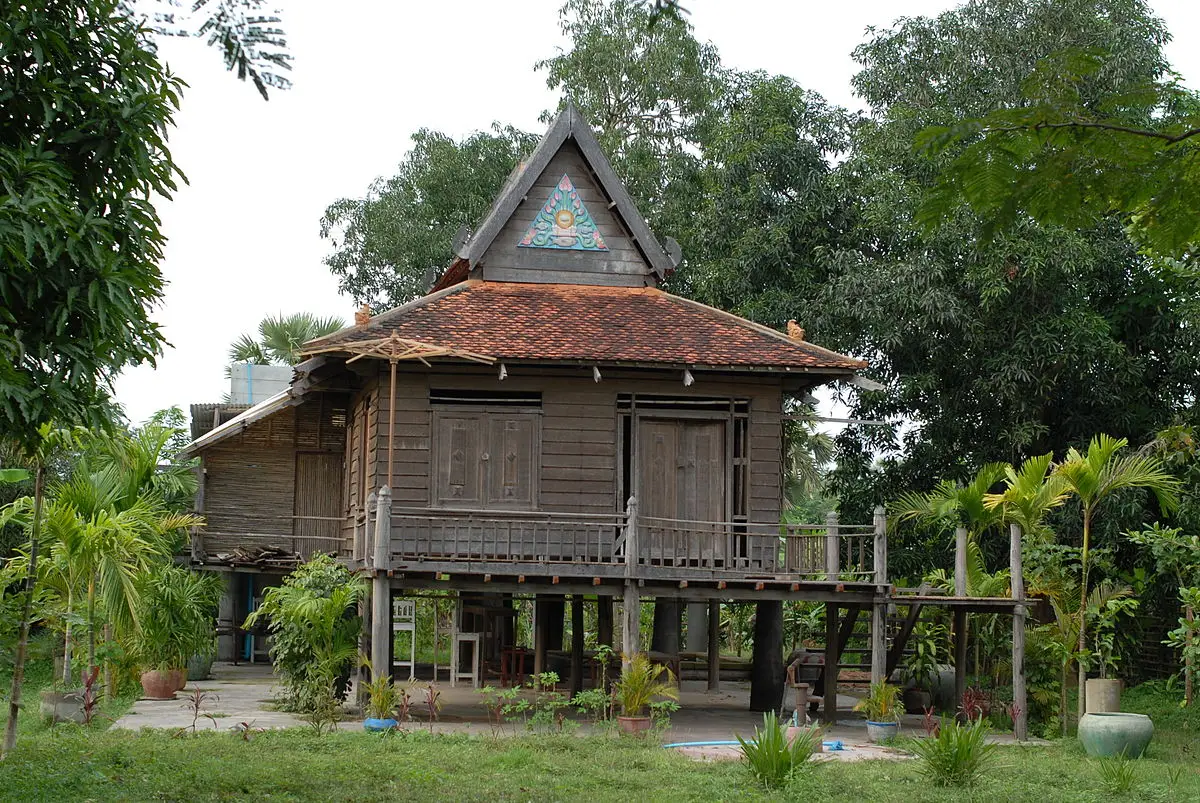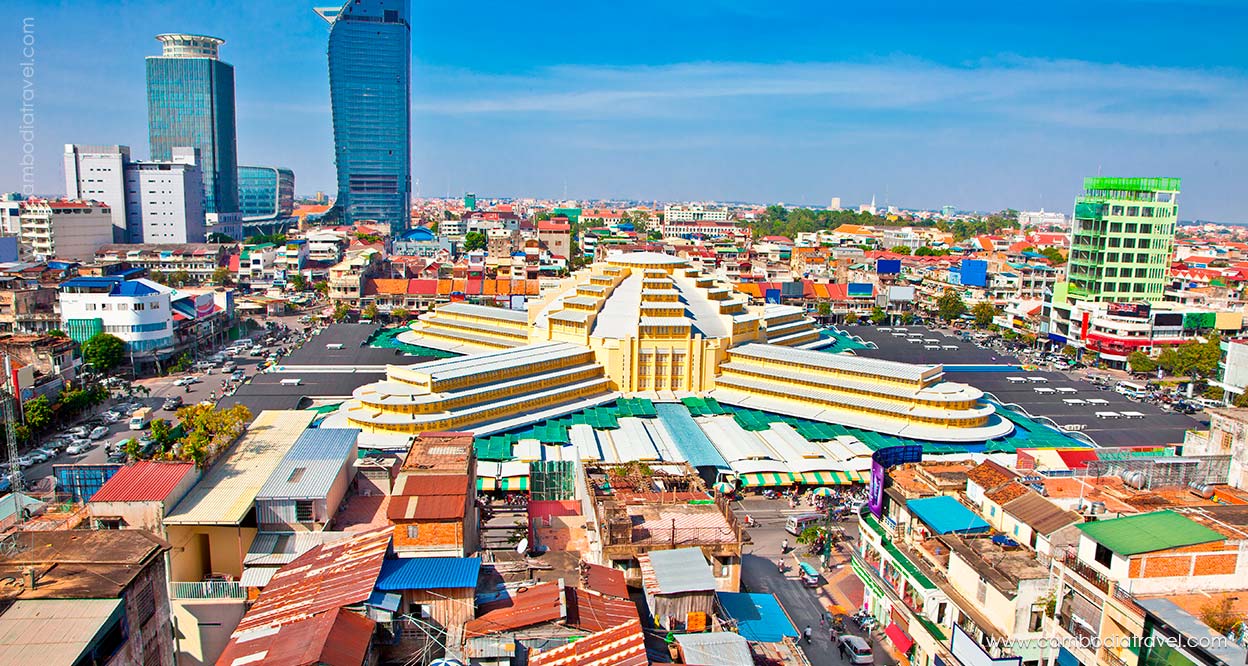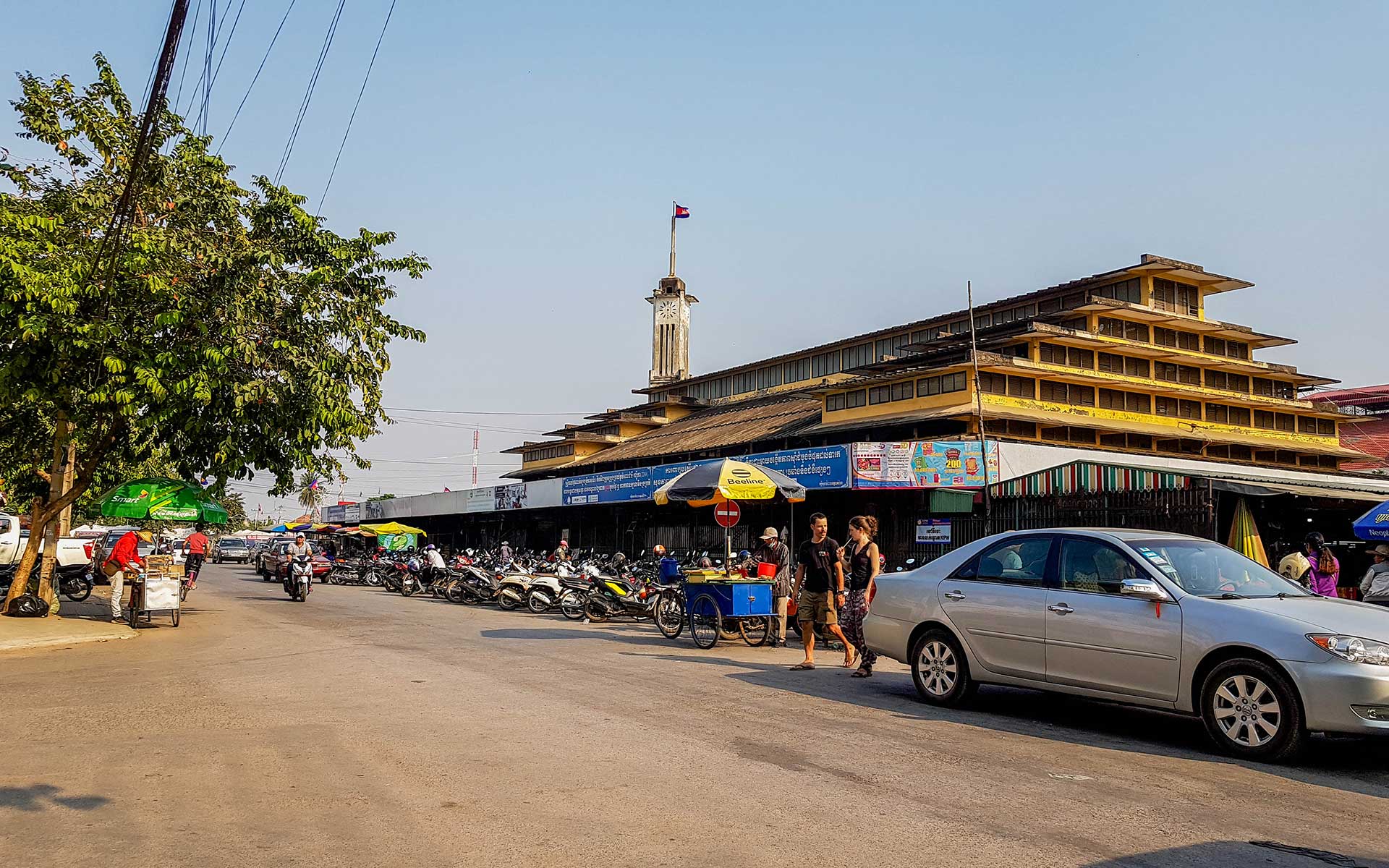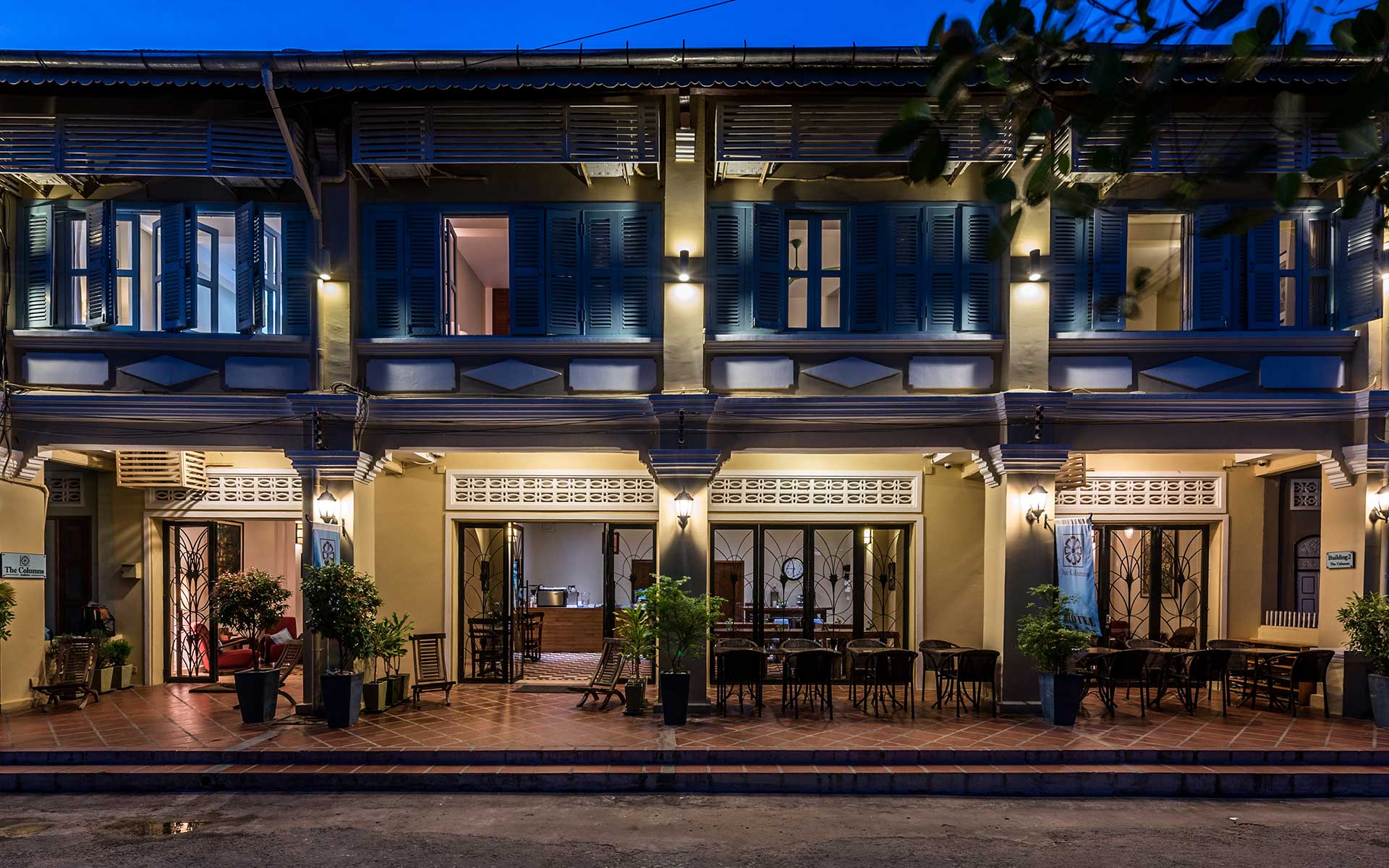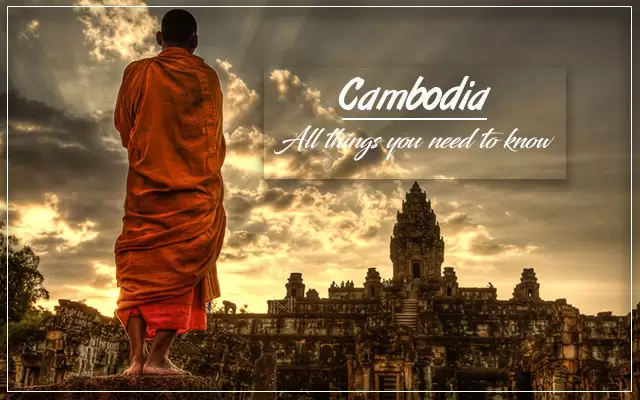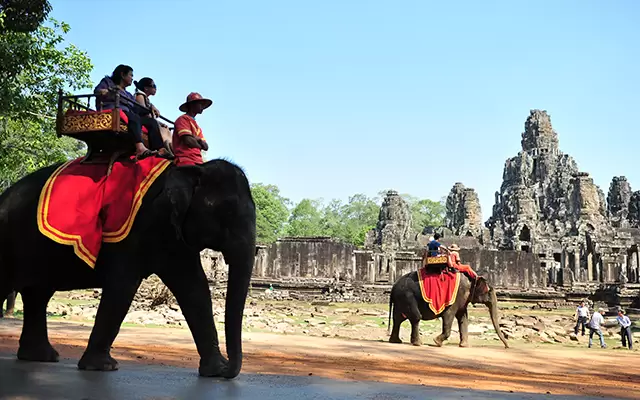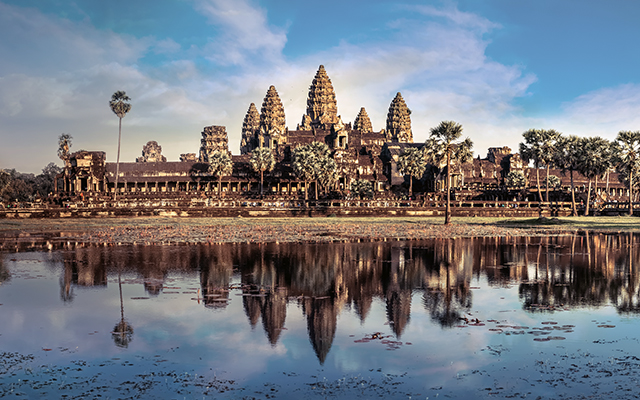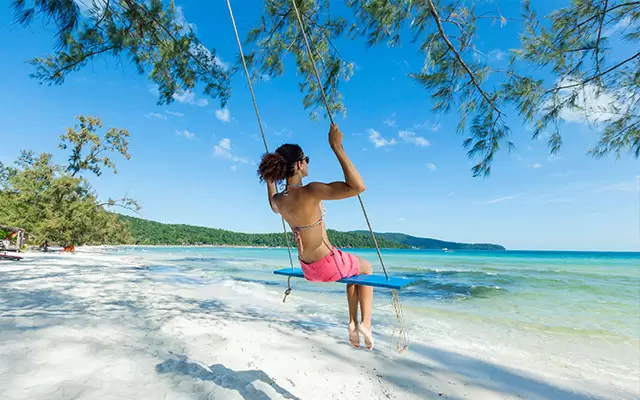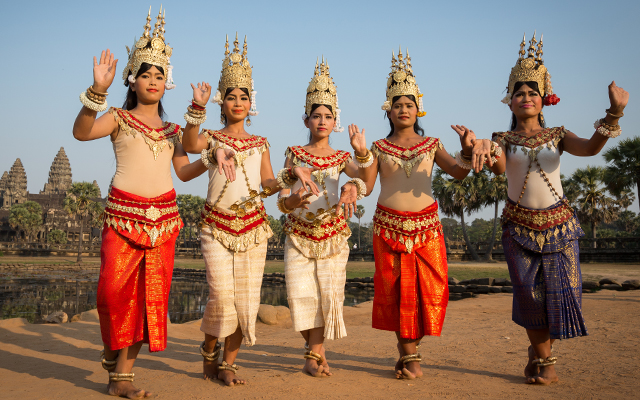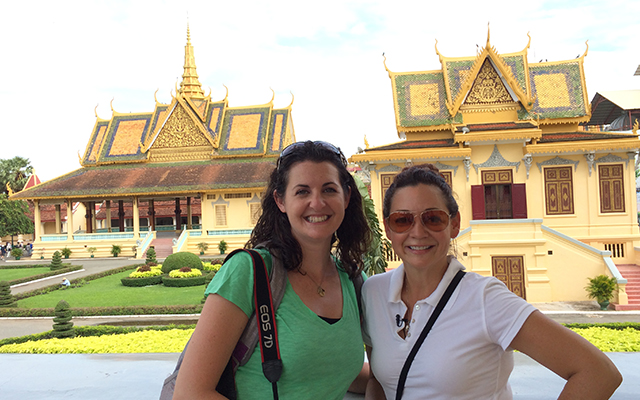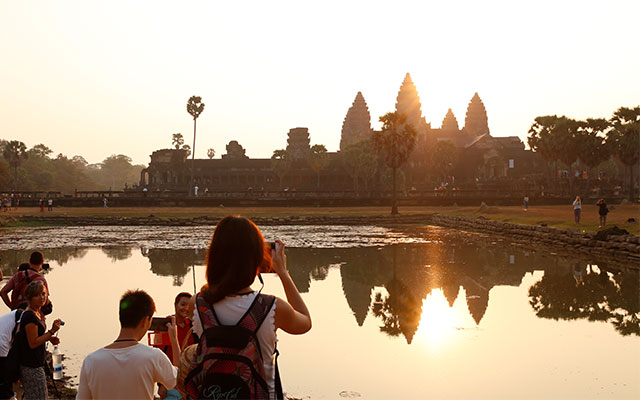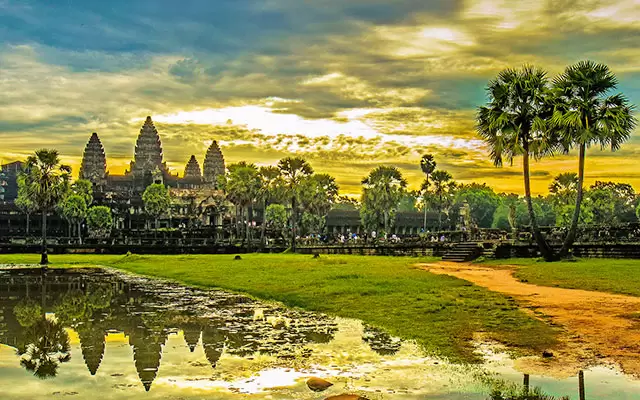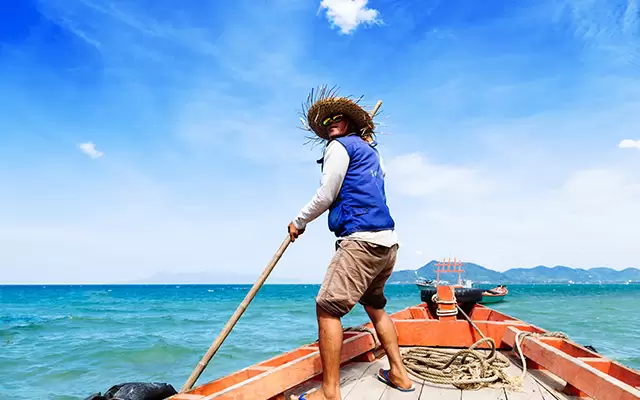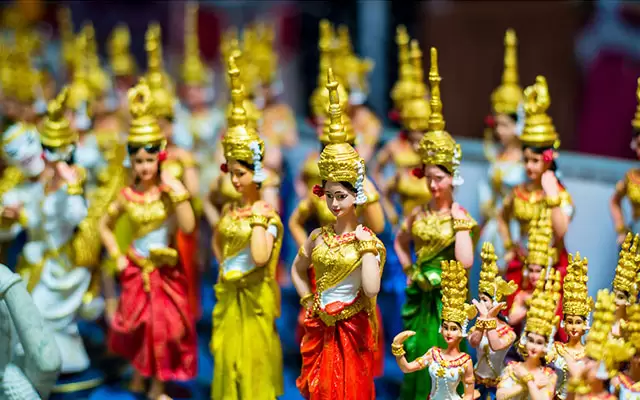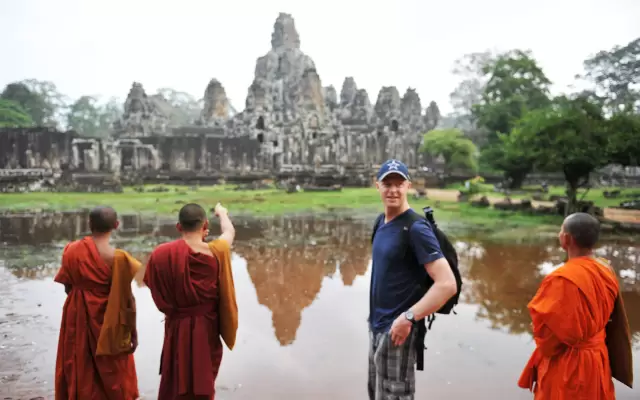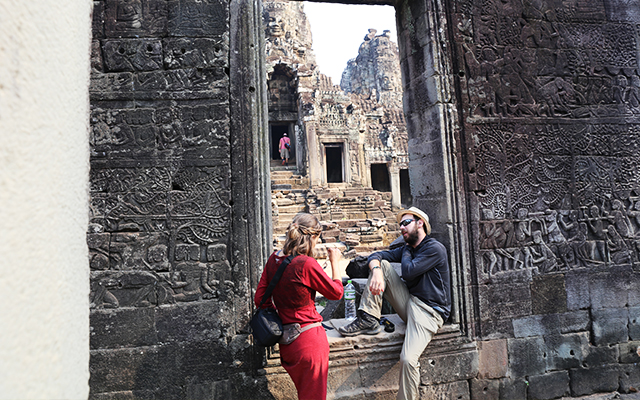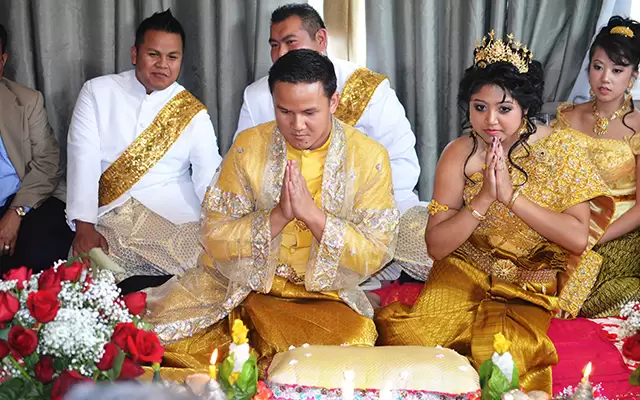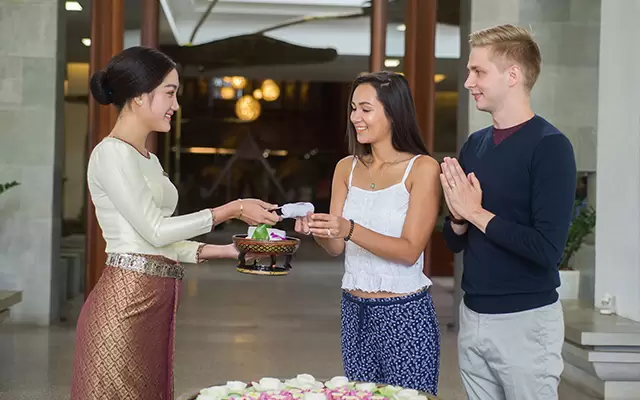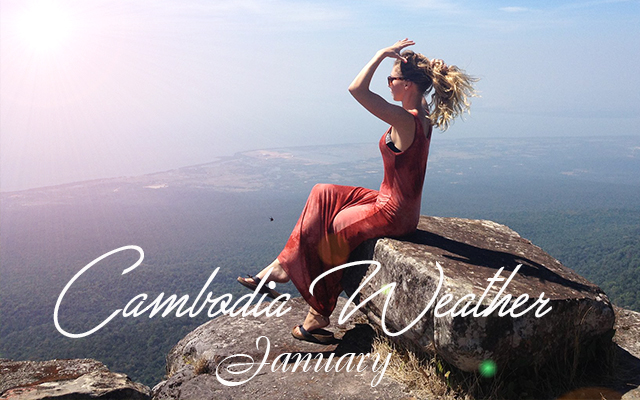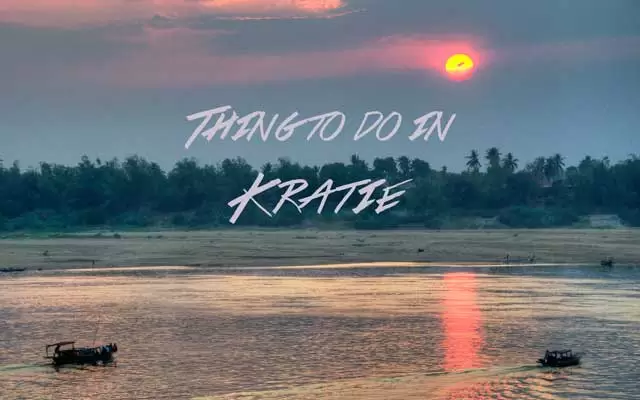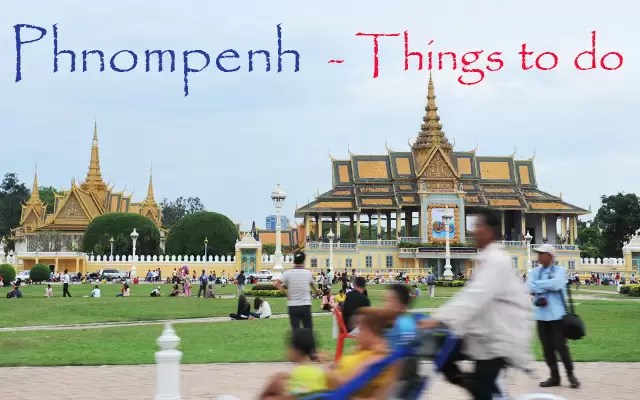Cambodian Architecture – Ancient Khmer Architecture
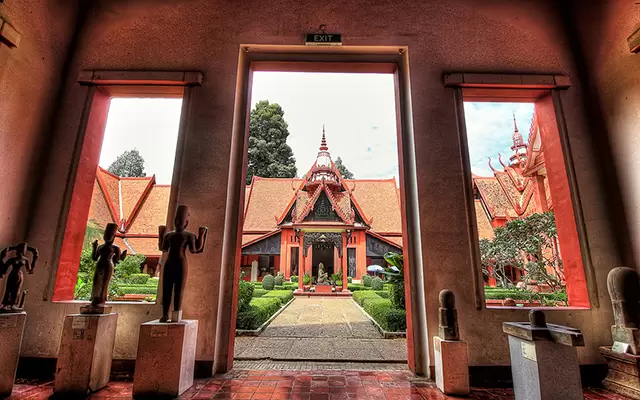
Cambodian Architecture - Ancient Khmer Architecture
The iconic Angkor Temples during the growth and peak of Khmer Empire have always been the great crowd puller, which attracts people from all over the world coming to the Kingdom of Wonders. However, Cambodian architecture is not only synonymous with ancient Khmer architecture because beyond Angkor Wat, there are still lots of masterpieces from French colonial architecture and New Khmer architecture built throughout the country.
Table of Contents
Ancient Khmer Architecture
Cambodia is a country steeped in history and culture, and one of its most remarkable features is its architecture. Khmer architecture, in particular, has left a significant mark on Southeast Asia, with its unique blend of Hindu and Buddhist elements, intricate carvings, and stunning temple complexes. From the iconic Angkor Wat to the ancient ruins of Banteay Srei and Preah Vihear Temple, Cambodian architecture has captivated people around the world with its beauty and grandeur. But Khmer architecture is not limited to temples and religious structures; it also encompasses traditional Khmer housing styles, such as stilt houses and floating villages, as well as the influence of French colonialism on Cambodia’s architecture.
Ancient Khmer architecture is an impressive feat of engineering and artistry that has left a lasting impact on the cultural heritage of Cambodia and Southeast Asia. The temples and structures built during the Khmer Empire (9th to 15th centuries) are some of the most iconic examples of ancient Khmer architecture. These structures are located in the Angkor Archaeological Park, which spans over 400 square kilometers and contains over a thousand temples, shrines, and other structures.
One of the most famous and awe-inspiring examples of ancient Khmer architecture is Angkor Wat, which was built in the 12th century as a Hindu temple and later converted to a Buddhist temple. The temple is a massive complex with multiple levels and towers, intricately carved walls and ceilings, and bas-reliefs depicting scenes from Hindu and Buddhist mythology. The sheer scale and complexity of Angkor Wat make it a remarkable achievement of ancient architecture.
Another notable temple in Angkor Archaeological Park is Bayon Temple, which was built in the late 12th century as a Buddhist temple. The temple is famous for its towers with carved faces, which are believed to represent the Buddhist deity of compassion, Avalokiteshvara. The faces are carved in such a way that they appear to be smiling, regardless of the viewer’s position, giving the temple a sense of benevolence and mystery.
Banteay Srei, located about 25 kilometers north of the main Angkor Archaeological Park, is another impressive temple built during the Khmer Empire. Unlike the massive stone temples of Angkor Wat and Bayon, Banteay Srei is made of pink sandstone and is relatively small in scale. However, what it lacks in size, it makes up for in detail and intricacy. The temple is covered in delicate carvings and bas-reliefs that depict scenes from Hindu mythology.
Preah Vihear Temple is another famous example of ancient Khmer architecture, located on the border between Cambodia and Thailand. It was built in the 11th century as a Hindu temple and later converted to a Buddhist temple. The temple is situated on a steep cliff and provides stunning views of the surrounding landscape.
Also known as Angkorian architecture, ancient Khmer architecture was produced by the Khmers during the Angkorian era of the Khmer Empire, which flourished from approximately the 9th to 15th centuries. During the period of Angkor, non-religious buildings such as dwellings were constructed by poorly exploited materials like wood whereas temples and other religious buildings were built by stone. Therefore, all the remaining Angkorian buildings are religious sites in nature. The emphasis of Angkorian architecture’s study is necessarily on religious architecture.
Under the Khmer Empire, temples were constructed in accordance to the rule of ancient Khmer architecture and developed in stages, which are preserved in many magnificent buildings of the Angkor Temples. Angkorian architects and sculptors created temples with basic layout of a central sanctuary, a courtyard, enclosure, and a surrounding moat. Elements and motifs were inspired by religion and mythical creatures from Hinduism and Buddhism. However, not all of these features were equally in evidence throughout the Angkorian period because a number of different architectural styles succeeded one another.

Angkor Wat – the most outstanding religious architecture during the Angkorian era of the Khmer Empire.
Materials
Khmer master craftsmen used brick, sandstone, laterite and wood for their main structures. However, the wood elements having been lost due to destructive processes so the ruins remain of brick, sandstone and laterite.
- Brick is the main material to construct the earliest Angkorian temples such as Preah Ko, Lolei, Bakong. Decorations were not carved directly into the brick, but through a stucco applied to the brick because brick is soft material. Brick is not as strong as stone so it was used to build relatively small temples such as Preah Ko and Lolei.
- Sandstone used by Angkorian builders were obtained from the Kulen plateau, the closest to Angkor being some 30 kilometers away. Initially, this material was used for particular elements like door frames due to the complicated process of transferring it from Kulen to construction site. Takeo is possibly the first Angkorian temple to be built entirely in sandstones, which were cut into a regular size and placed in position.
- Laterite was used for foundations and other hidden parts of buildings due to its characteristic. When taken from the ground, it is soft but become harder when exposed to the sun. Laterite was used in the underlying layers of Angkor Wat and other large temples where the water level was high. This material could absorb and strengthen temples’ stability.
Structures
- Temple mountain: During the Angkorian period, the dominant construction layout of state temples was form of temple mountain. This architectural style represented Mount Meru – home of the devas in Hindu mythology, and was influenced by South Indian temple architecture. The temple was constructed in the shape of steeped pyramid, with the highest elevated sanctuary put at the center as the home to the temple’s primary deity. Surround the temple are enclosures representing mountain chains and a moat representing ocean. Temple mountains in Angkor include Bakong, Baphuon, Pre Rup, Ta Keo, Koh Ker, Phimeanakas, and Phnom Bakeng.
- Central sanctuary: Traditionally called as Bakan, the central sanctuary held the main shrine of the temple’s primary deity – Shiva or Vishnu in a Hindu temple, Buddha or a bodhisattva in a Buddhist temple. The shrine must be large enough to hold the statue or linga, which represents for the deity. This sanctuary is located at the center of the temple and at the highest level.
- Prang: It is a richly carved tower-like spire. This structure has receding size as it ascends, which reminds of Indic shikhara of Hindu temple. Prang represents peak of Mount Meru, home of the devas in Hindu mythology.
- Enclosure: A concentric series of walls surrounded Khmer temples represent the mountain ranges surrounding Mount Meru. These walls are divided by enclosures, which are numbered from the centre outwards.
- Gallery: Gallery is a passageway lining along the walls defining the Khmer temples’ enclosures or temple’s axis. This form evolved during the 10th century when the long hallways were used to surround the temple’s central sanctuary. Then additional half galleries on one side were introduced in the first half of 12th century during the period of Angkor Wat.
- Gopura: An entrance building or entrance pavilion to access a temple. Gopura was constructed with enclosures surrounding a temple and placed at each of the four cardinal points. Gopuras are often impressively decorated with lintels and pediments. Gopuras in Angkor Thom which are adorned with gigantic stone faces are among the most photographed points in Angkor Park.
- Library: Even being the common feature of Khmer temple architecture, the true purpose of library remains unknown. They are free standing buildings which were normally placed in pairs on either side of an enclosure’s entrance and open to the west. Angkor Wat’s libraries exceptionally open to both the East and the West.
- Baray: Baray is a giant water reservoir made by excavation and embankment, respectively. The significance of baray is still mysterious. There is speculation that it was part of irrigation system but some believe that it served for religious purpose. There is a temple on an artificial island located in the center of baray. In the middle of the baray associated with Preah Khan stands the 12th century temple of Neak Pean. West Baray – the largest reservoir in Angkor, homes the 11th century West Mebon at its center.
- Naga bridge: There is a nine headed serpent in the shape of a fan is adorned on each side of the bridge leading to entrance gate of temples in Angkor. The naga’s whole body extends the length of the bridge, forming a barrier over the edge of the bridge. This representation may symbolize the transition from the world of men to the world of the gods, and reinforced by Indra’s presence.
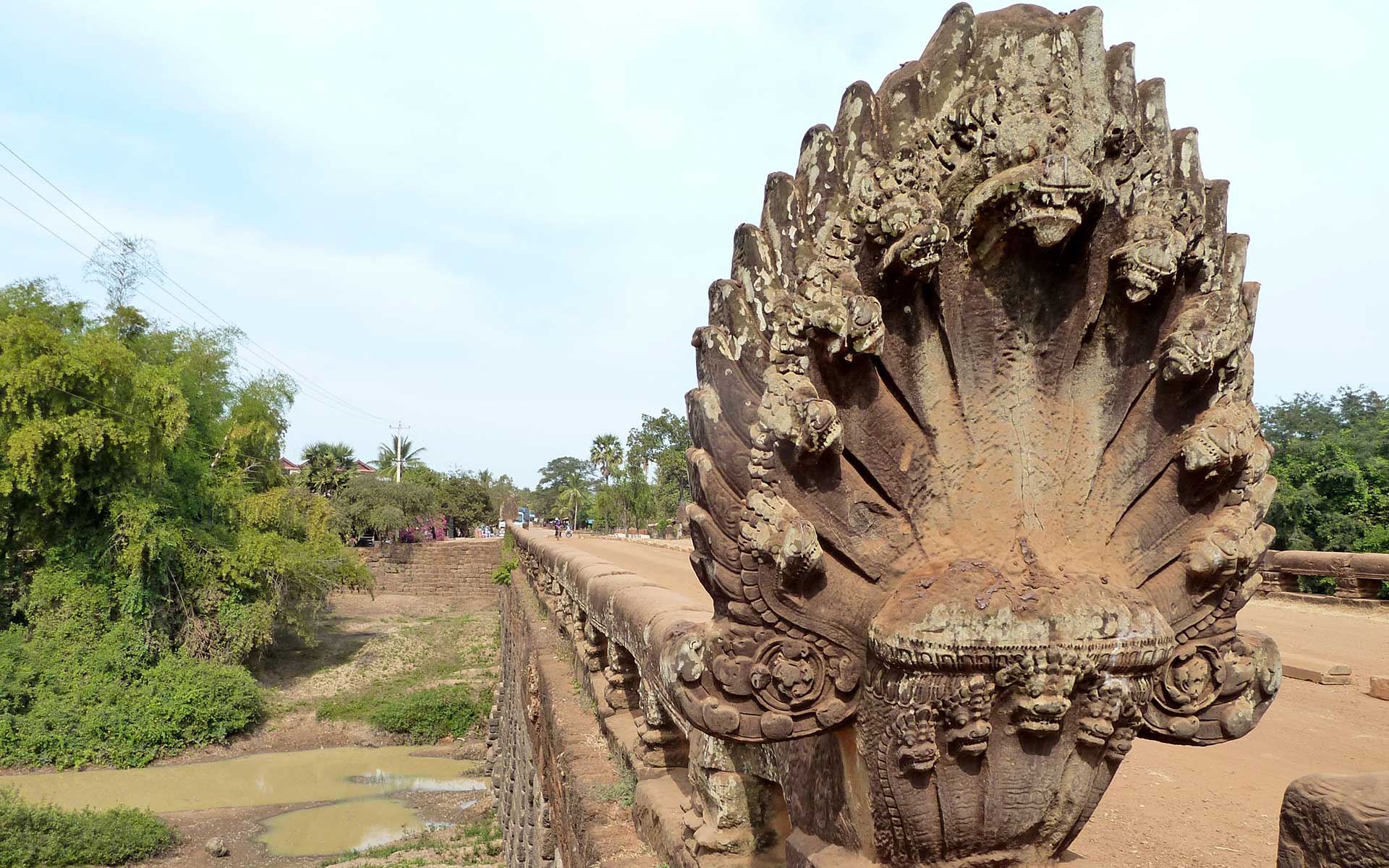
Naga Bridge – a nine headed serpent in the shape of a fan is adorned on the bridge leading to entrance gate of temples in Angkor.
Elements
- Bas-reliefs are figures or entire scenes sculpted into stone walls. They are narrative bas-reliefs depicting stories from mythology and history. The external gallery wall in Angkor Wat is covered with around 13,000 square meters of narrative bas-reliefs mentioning about historical and mythological scenes. The medieval Khmer’s everyday life as well as historical events from the reign of King Jayavarman VII are the main topics of bas-reliefs in the Bayon’s outer gallery.
- Stairs in Angkor Temples are notoriously steep with an angel of ascent between 45 and 7-0 degrees. This steep stairway represents the “stairway to heaven”, “the realm of the gods” from the religious perspective. According to Angkor-scholar Maurice Glaize, the monumental point of view for this peculiarity is that “the square of the base not having to spread in surface area, the entire building rises to its zenith with a particular thrust”.
Motifs
- Apsara: celestial dancing girls – found at Preah Khan, Bayon, Angkor Wat.
- Devata: minor female deities – found at Preah Khan, Bayon, Angkor Wat.
- Dvarapala: demonic temple guardians with clubs and lances – seen at Banteay Kdei, Banteay Srei, Preah Khan, Preah Ko and Lolei.
- Gajasimha: mythical animal with lion’s body and elephant head, temple guardian – found at Banteay Srei and Rolous Group.
- Reachisey: mythical animal with lion’s head, dragon’s body and a short elephant trunk – found at Angkor Wat’s outer gallery.
- Garuda: half man – half bird, lord of birds.
- Kala: a ferocious monster with only the head with a large upper jaw depicted, no lower jaw.
- Linga: cylinder symbolic of the Hindu God Shiva and creative power. It was places in the central sanctuary to represent king himself and express his consubstantially with Shiva.
- Naga: a snake with multiple heads, always in uneven number and arranged in a fan. Nagas were symbols of water and also characters in other well-known legend “the churning of the Ocean of Milk” and stories depicted in Khmer art. Mucalinda was the serpent king who protected the meditating Buddha from torrential rains with its hoods.
- Quincunx: a spatial arrangement of five elements to convey the five peaks of Mount Meru. This arrangement can be found in designs of East Mebon with five brick towers, or in the riverbed carvings in Kbal Spean.
- Shiva: Angkorian Khmer worshipped Shiva in the form of a linga at most Angkor Temples. He is one of principle deities of Hinduism.
- Vishnu: He is one of principle deities of Hinduism.
Overall, ancient Khmer architecture is a testament to the engineering prowess and artistic talents of the Khmer people. The temples and structures built during the Khmer Empire continue to inspire and captivate people from all over the world with their beauty, complexity, and historical significance.
Traditional Khmer Housing
Traditional Khmer housing is a unique and integral part of Cambodia’s cultural heritage, reflecting the country’s geography, climate, and way of life. Two of the most prominent types of traditional Khmer housing are stilt houses and floating villages, which have been used for centuries by Cambodians living along the country’s many waterways.
Stilt houses are built on high wooden poles or stilts, allowing them to remain above the floodwaters during the rainy season. These houses are typically made of wood, bamboo, or thatch, with a sloping roof and open sides to allow for airflow. The living space is typically elevated off the ground, with the lower level used for storage, cooking, and socializing. Stilt houses often feature intricate carvings and decorations, showcasing the craftsmanship of the builders.
Floating villages, on the other hand, are communities built on or near bodies of water, such as rivers, lakes, or the Tonle Sap. These communities are entirely or partially constructed on floating structures, such as boats or rafts, and are often mobile, moving to different locations depending on the season or the availability of resources. The houses in these villages are typically made of bamboo, wood, or metal and are often brightly colored, making them visible from a distance.
Both stilt houses and floating villages have cultural significance beyond their practical purposes. They reflect the close relationship Cambodians have with their natural surroundings, emphasizing the importance of water and the environment in their daily lives. They also reflect traditional social structures and values, with families often living in close proximity and relying on each other for support.
Today, traditional Khmer housing is facing challenges, as modernization and urbanization threaten to erase this important aspect of Cambodia’s cultural heritage. However, efforts are being made to preserve and promote traditional Khmer housing, both as a way to protect the country’s cultural identity and as a source of sustainable tourism. As Cambodia continues to develop and grow, it is important to remember and honor the country’s rich history and cultural heritage, including its traditional housing styles.
Cambodian Architecture under French Colonial Rule
Cambodian architecture under French colonial rule is a fascinating topic that reflects the unique blend of traditional Khmer styles and French colonial influences. In the late 19th century, Cambodia came under French colonial rule, which lasted until the mid-20th century. During this period, the French introduced Western architectural styles to the country, including neoclassical and Art Deco designs.
One of the most significant examples of French colonial architecture in Cambodia is the Phnom Penh Royal Palace, which was constructed in the 19th century. The palace is a beautiful example of a blend of French and Khmer architecture, with its distinctive golden roofs and spires, traditional Khmer-style tiered roofs, and classical European-style facades.
Another example of French colonial influence on Cambodian architecture is the Silver Pagoda, located within the Royal Palace complex. The Silver Pagoda is known for its silver floor tiles and houses many valuable artifacts, including a life-sized Buddha made of solid gold.
Additionally, the French introduced modern urban planning and architecture to Cambodia’s cities, which led to the construction of many new buildings, such as schools, hospitals, and government buildings. The influence of French colonial architecture is still evident in Cambodia today, particularly in the capital city of Phnom Penh, where many of the old colonial buildings have been preserved and repurposed.
Cambodia was a French protectorate within French Indochina during French Colonial Empire from 1863 until its official independence in 1953. During this period, the French built many constructions throughout the country with administrative offices, banks, hospitals, hotels, schools and so on. Some of the best examples of French colonial architecture can be found in Phnom Penh, Kampot and Battambang.
Phnom Penh
Used to be known as the Pearl of Asia, former glorious remains in Phnom Penh with few magnificent buildings still in good conditions.
- Psar Thmei, or widely known as Central Market, is a landmark itself due to the impressive art deco design by French architects. Located right in the heart of the city, this huge golden domed structure resembles a Babylonian ziggurat and used to be ranked as the biggest indoor market in Asia when it was completed in 1937.
- Raffles Hotel Le Royal opened its doors in 1929 and presents a wonderful fusion of colonial, Khmer and Art Deco styles. The hotel itself is a true heritage landmark in the Cambodia’s capital and no surprisingly chosen as a regular staying place for famous writers, royalty and celebrities like Charlie Chaplin, Jackie Onassis, André Malraux, and W. Somerset Maugham, Jackie Kennedy.
- Central Post Office is located in the center of the French administrative district. This French neoclassical building was opened in 1895 and is one of the best place to admiring colonial architecture in Phnom Penh.
- Phnom Penh Railway Station is the pride of Phnom Penh citizens with two quad towers, centerpiece clock and Art Deco balustrade.
Battambang
Battambang – the second largest city in Cambodia, is a little off the beaten track with some of the best-preserved French colonial architectural buildings.
- Psar Nat Market built in the 1930s shares the similarities in the Art Deco design of Phnom Penh Central Market and Ben Thanh Market in Saigon (Vietnam). Because all three markets were designed by the same French architect.
- Colonial Quarter is situated along the riverfront, especially along 2 blocks at the south of Psar Nat Market. Along Street 3 east of the train station are shop houses are also fine examples of the French architecture of the early 20th century.
Kampot
The sleepy riverine town of Kampot has a generous amount of French colonial architecture dating back to the first half of 20th century. Many of these colonial shop houses have been renovated into nice boutique style hotels, quirky café and restaurants.
- Hotel Old Cinema was transformed into a great boutique hotel from the old cinema, which dated from the early 1950s. Original details like Art Deco façade in yellow and turquoise palette, columns and moulding have been kept and refreshed.
- The Columns is a modern boutique hotel which was restored and renovated from a set of shop houses when Cambodia was a French colony. It retains original features such as wooden beams, pretty tilework, blue French Colonial shutters.
Overall, Cambodian architecture under French colonial rule is a testament to the unique blend of cultural influences that have shaped Cambodia’s architectural landscape. The fusion of traditional Khmer styles and Western architectural elements has created a distinctive hybrid style that reflects Cambodia’s complex history and diverse cultural heritage.
New Khmer Architecture
New Khmer Architecture is the architecture movement in Cambodia during the 1950s and 1960s, after Cambodia gained its independence from France in 1953. Prince Norodom Sihanouk, who won the elections in 1955, was a visionary leader. He desired to lead Cambodia to become an integral part of the world then made all-encompassing effort to modernize all aspects: agriculture, infrastructure, industry, education, health care, tourism and arts.
Modern movements were blended with the grand tradition of Angkor and the vernacular tradition of locals’ ordinary houses, labeling the country with many buildings in the style of New Khmer Architecture. The use of assertive structures and reinforced concrete are the main characteristics of this movement.
To deal with local tropical climate, structures are raised on columns to create natural cooling effects, as well as open shaded spaces for social activities. And the height of buildings as the method of protection in flooding times. Other vernacular traditions adapted are wall panels and with double walls and roofs to avoid direct sunlight.
The use of moats and raised walkway are inspired by the Angkor tradition. The main function of moat is a water reservoir in wet season and becomes a cooling device in dry season. Distinctive examples of this approach are the Teacher Training College and the National Sports Complex.
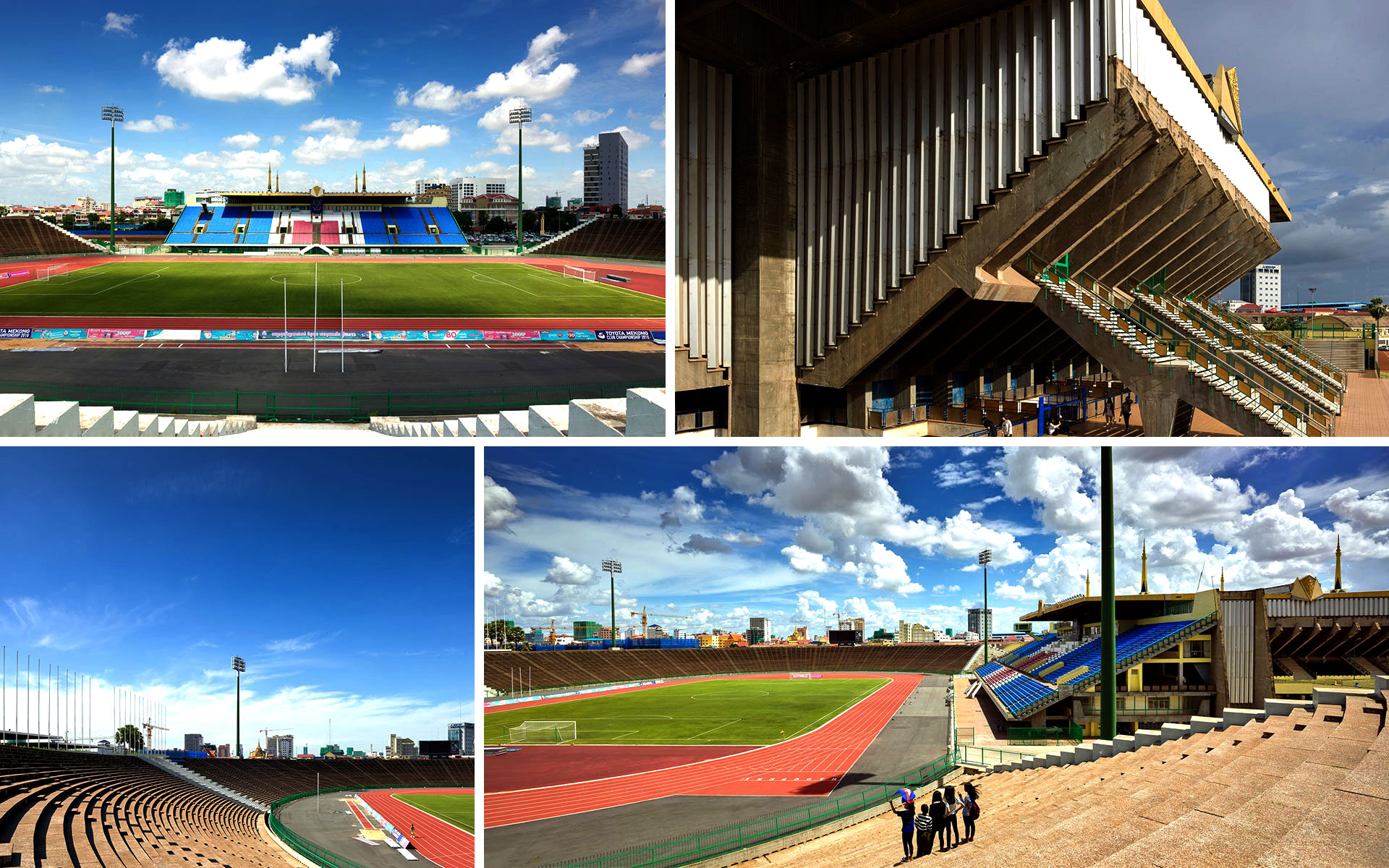
The National Sports Complex in Phnom Penh, designed by Vann Molyvann, is one of the most distinctive examples of New Khmer Architecture.
At the beginning period of New Khmer Architecture, foreign influences were highly evident in the style and there was not any qualified Cambodian architect or engineer. Or young qualified architects returned from abroad were lack in experience. Until 1965, the newly founded Royal University of Fine Arts began teaching architecture. From then, many talented architects contributed to create the successful era of New Khmer Architecture. Among them, Vann Molyvann was the most famous architect of this school.
He was the designer for a number of prominent landmarks in Phnom Penh such as the Olympic Stadium, the Chatomuk Theatre and Independence Monument. These structures integrated international architectural elements with local tradition, materials and climate. This iconic Cambodian architect also led the creations movement of Knai Bang Chatt Resort in tranquil coastal town of Kep.
In summary, there is no better way to understand about the history and significance of Cambodian architecture than taking a visual journey to this Kingdom of Wonders. Just visit Cambodia Travel’s website and you can sign up for any tour to Siem Reap, Phnom Penh, Battambang, Kampot and Kep, which are home to many typical structures through different phases of Cambodia history.

